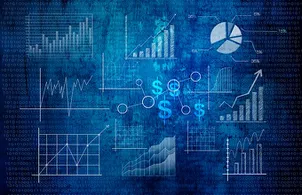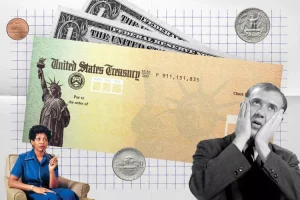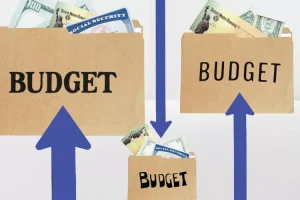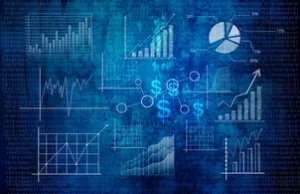
Broadly speaking, an economy is an interrelated system of human labor, exchange, and consumption. An economy forms naturally from aggregated human action–a spontaneous order, much like language. Individuals trade with each other to improve their standards of living. Improved standards of living are made possible when labor is more productive. Productivity is driven by specialization, technological innovation, and working capital. The only sustainable way for an economy to grow is through increased productivity.
▼KEY TAKEAWAYS
- An economy is a connected system of labor, exchange, and consumption, formed from human action, and driven by increased productivity.
- Economies stand distinct from one another as a result of regional boundaries; they develop distinctly from one another based on government actions, policies, labor, and productivity growth.
- Economic growth results when groups of people, so-called economic actors, are able to produce goods and services with increasing efficiency.
- To produce real productivity, an economy must have better tools and equipment, namely capital goods, and greater specialization of laborers.
What Is an Economy?
Most economies are distinguished from one another by regional boundaries (the U.S. economy, the Chinese economy, and the economy of Colorado). This distinction has become less accurate with the rise of globalization and the introduction of e-business. It doesn’t take a planned government effort to create an economy, but it does take one to restrict and artificially mold it.
The fundamental nature of economic activity only differs from place to place based on the restrictions placed on economic actors. All human beings are faced with resource scarcity and imperfect information. The economy of North Korea is very different from South Korea, despite a similar heritage, people, and set of resources. It’s public policy that makes their economies so distinct.
Players in Economic Formation
Economies form when a variety of parties come together. Each of these parties are discussed specifically and in more depth below.
Households
In some respects, households are the backbone of an economy. Households refer to individual consumers and families, and they drive economic activity through their consumption of goods and services. The financial decisions made by households, such as spending, saving, and investing, collectively impact the overall economic health.
On the other hand, households contribute to the labor force. These are the people providing the workforce that is essential for businesses to operate and produce goods and services. In the economic cycle, it’s the compensation from participating in this labor force that allows household consumption.
Businesses
What good would having income be if there were no goods to buy? In addition, how would households be able to consume those goods without having an income source?
Businesses range from small local enterprises to large multinational corporations, contributing to job creation and innovation. They also play a central role in manufacturing goods, demanding services, and distributing products. As we’ll discuss later in the economic growth section, a business retains capital, reinvests in research and development, and attempts to scale economic growth through its profits.
Government
Some people don’t think the government should play a large role in the economy. Others feel governments play a key regulatory role. In the United States, through fiscal policies (related to taxation and government spending) and monetary policies (related to rates), governments influence economic stability. On top of this, governments also employ people, giving them an income source. Governments also have necessities they can demand from businesses across a range of goods and services.
Banks/Financial Institutions
An important part of a growing economy is the ability to capture credit. Consider an example of a small business wanting to launch but not having enough money. Banks facilitate the flow of money by providing financial services such as loans, savings accounts, and investment opportunities. To help shape an economy, a bank may loan that small business owner capital.
Investors
Very similar to what banks do by facilitating capital, investors do the same. Investors influence economic activities and resource allocation by giving people money in the hopes that that money grows. The decisions of investors impact asset prices, interest rates, and the overall efficiency of financial markets.
Economic Formation
An economy forms when groups of people leverage their unique skills, interests, and desires to trade with each other voluntarily. People trade because they believe it makes them better off. Historically, a form of intermediation (money) is introduced to make trade easier.
People are financially rewarded based on the value others place on their productive outputs. They tend to specialize in that which will deem them most valuable. Then they trade the portable representation of their productive value (money) for other goods and services. The total sum of these productive efforts is referred to as an economy.
Example of Economic Formation
The clearest opportunity to examine the formation of an economy is when a country starts; because of this, let’s look at the U.S. during colonial times.
Agriculture was a fundamental economic activity, with subsistence farming prevalent in New England and the Middle Colonies. Large-scale plantations dominated the Southern Colonies, particularly for crops like tobacco. This agricultural foundation not only sustained local communities but also contributed to the broader colonial economy as colonies could profit from what they were best at producing.
Trade and mercantilist policies played an important role, as the Navigation Acts imposed restrictions on colonial trade. These acts emphasized the export of raw materials to Britain and the import of finished goods. This system created an economic dependency on the British markets and influenced the early stages of the U.S. economy.
Craftsmanship and skilled trades thrived in urban centers, contributing to economic diversity. Cities like Boston and Philadelphia became hubs for skilled craftsmen, further shaping the economic landscape. Consider how this has helped shape society today; these large cities continue to bring workers together.
It’s also important to think through business opportunities and the ability to trade goods to different markets. The Triangular Trade routes connected the American colonies with Europe, Africa, and the Caribbean. This helped move goods, laborers, raw materials, and finished products. without this wide-scale complex network, it would have been much more difficult for the U.S. economy to scale without business partners and suppliers.
Growing an Economy
An individual laborer is more productive (and worth more) when they can more efficiently turn resources into valuable goods and services. This could be everything from a farmer improving crop yields to a hockey player selling more tickets and jerseys. When a whole group of economic actors can produce goods and services more efficiently, it’s known as economic growth.
Growing economies turn less into more, faster. This surplus of goods and services makes it easier to achieve a certain standard of living. This is why economists are so concerned about productivity and efficiency. It’s also why markets reward those who produce the most value in the eyes of consumers.
There are only a handful of ways to increase real (marginal) productivity. The most obvious is to have better tools and equipment, which economists call capital goods–the farmer with a tractor is more productive than the farmer with just a small shovel.
It takes time to develop and build capital goods, which requires savings and investments. Savings and investment increase when present consumption is delayed for future consumption. The financial sector (banking and interest) provides this function in modern economies.
The other way to improve productivity is through specialization. Laborers improve the productivity of their skills and capital goods through education, training, practice, and new techniques. When the human mind better understands how to use human tools, more goods and services are produced and the economy grows. This raises the standard of living.
Example of Growing an Economy
We’ll stick with the historical examples and analyze the United States in the post-World War II era to look at economic growth. This era is sometimes referred to as the “Golden Age of Capitalism”.
This era, roughly spanning from the late 1940s to the early 1970s, marked a significant expansion of the U.S. economy for several reasons. First, the G.I. Bill, enacted in 1944, provided a range of benefits to returning veterans. This gave people education, housing, and business loans in an attempt to reintegrate millions of people back into civilization. This meant a more skilled workforce with greater earning and spending capabilities.
This postwar period also witnessed substantial technological advancements and innovation. Industries such as manufacturing, aviation, and electronics experienced significant growth. This period brought about the expansion of the automobile industry and the rise of television. This innovation not only helped create job opportunities but also contributed to household consumption.
The last item we’ll highlight in this very high-level example is infrastructure. In the 1950s, President Dwight D. Eisenhower initiated the construction of the interstate highway system. This infrastructure development not only improved transportation and connectivity but also created jobs.
To wrap up all of these specific examples, it’s important to highlight the government’s activity in this growth. The Federal Reserve implemented relatively stable monetary policies during this period, contributing to low inflation and interest rates. This not only facilitated the items above but helped bolster a wide range of economic growth.
Stunted Economic Growth
It may be intuitive that when the opposite of the above happens, economic growth does not happen. Still, let’s address reasons an economy may not grow. One major issue is a lack of investment, which happens when businesses are uncertain, have insufficient capital, or lack confidence in the economic environment. When businesses hesitate to expand, it affects production, job creation, and overall economic activity. Note that this investment extends to banks; when financial institutions tighten credit, it makes it harder for businesses to get money for growth.
Policy-related problems also contribute to economies not growing. Poorly implemented or inconsistent economic policies, excessive regulations, and political instability can create a tough business environment. This type of environment can discourage investment and hinder entrepreneurial initiatives.
Structural challenges within the economy, like poor infrastructure, an unskilled workforce, or outdated technology, are barriers to growth. Without a strong workforce or a proper infrastructure that allows for goods to be properly produced, it may be inefficient or prohibitively expensive to scale a business.
Last, let’s touch on external factors. Geopolitical tensions, natural disasters, or global economic downturns can also hinder growth. Trade disruptions, for example, can impact export-oriented economies. Natural disasters, as another example, can prevent goods from being moved from one location to another for manufacture or sale. In many cases, there are a lot of things out of the control of an economy as it tries to grow.
What Is Economics?
Economics is the study of how individuals and groups allocate limited resources to be used for production, distribution, and consumption. It is usually broken down into macroeconomics, which looks at the broad economy, and microeconomics, which looks at individual people and businesses.
What Are Economic Indicators?
Economic indicators are reports on how an economy is performing in key areas. These reports are released periodically and tend to impact stock performance, interest rate policy, and governmental policy. Some examples include GDP, retail sales, and employment data.
What Are the Types of Economic Systems?
The main types of systems are primitivism, where individuals self-produce needs and wants; feudalism, where economic growth is driven by production by social class; capitalism, in which individuals and businesses own capital goods and production is driven by the supply and demand dynamics of the market economy; socialism, in which production decisions are made by a group and many economic functions are shared by all; and communism, a type of command economy in which production is centralized through the government.
The Bottom Line
Economic formation and growth involve the dynamic interplay of consumers, producers, and governments. As economies evolve, factors such as technological advancements, stable governance, and participation in global trade contribute to sustained growth.
Maximize Your Retirement Income
Taking a strategic approach to investing can help you maximize your retirement income. Vanguard Personal Advisor® will work with you to build a customized financial plan that aligns with your goals. You’ll also benefit from innovative service at a low cost, and ongoing access to advisors. Learn more about how you can access personal financial advice and start the conversation.





